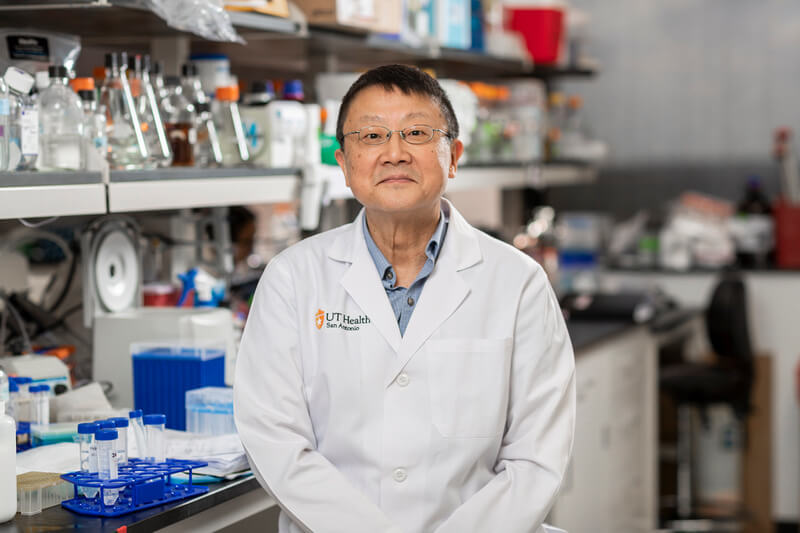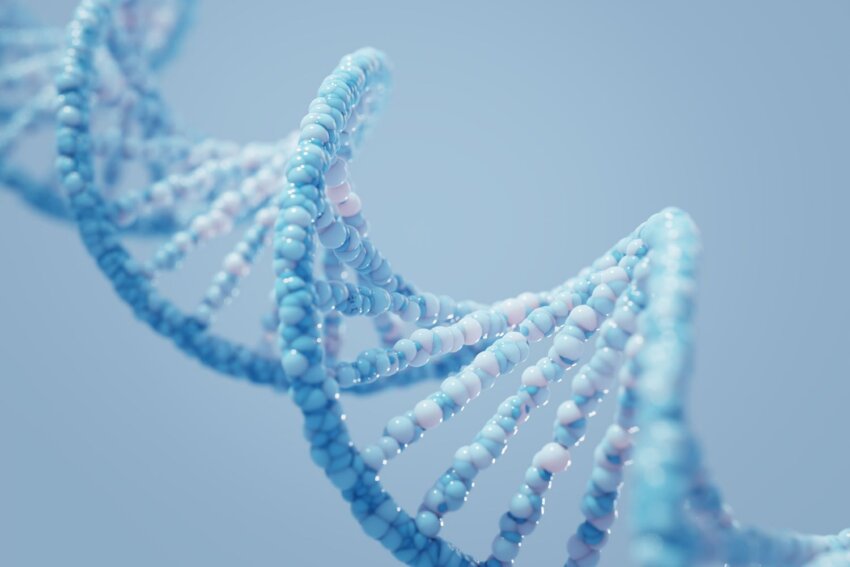Scientists at The University of Texas Health Science Center at San Antonio (UT Health San Antonio) have made one of the most important discoveries to date in the study and treatment of BRCA1-deficient cancers and drug resistance.
Approximately one in 300 Americans have a pathogenic mutation in the BRCA1 or BRCA2 gene, placing them at an elevated risk of developing certain cancers, especially breast and ovarian cancer. Of those who develop these cancers and are treated with PARP inhibitors — a generally efficacious therapy that targets poly(ADP-ribose) polymerases that the cancer cells need for DNA repair and survival — most patients eventually develop resistance to the drug.
“This seminal discovery opens the door to understanding how some breast, prostate and ovarian cancers become resistant to an important class of cancer drugs called the PARP inhibitors. These drugs can generate tumor regressions lasting years, but ultimately almost everyone relapses due to resistance. The DNA repair complex studied in the report is a prime target for causing that resistance and, thus, is a novel target for therapy. Drugs against this complex could possibly extend the lives of cancer patients treated with PARP inhibitors,” said Robert Hromas, MD, FACP, dean of the Joe R. and Teresa Long School of Medicine (Long School of Medicine) at UT Health San Antonio.
Pivotal understanding in PARP inhibitor resistance
Understanding the processes that cause cancer drug resistance is crucial for determining which treatment option would be most appropriate and for driving the development of new therapeutic approaches, said Patrick Sung, DPhil, director of the Greehey Children’s Cancer Research Institute and associate dean for research in the Long School of Medicine at UT Health San Antonio.

A study published May 22 in Science, co-led by Sung, including scientists from the Dana-Farber Cancer Institute at Harvard Medical School, Columbia University Irving Medical Center and UT Health San Antonio, explains how dysfunction in a certain complex (CST complex) that is crucial to regulating how DNA breaks are repaired can lead to PARP inhibitor resistance in BRCA1-deficient cancer cells.
“Of all the things we have done, this one has the most impact on clinical practice over the long run. Everyone expects malfunction in these proteins to give rise to drug resistance, but they do not know why and how,” said Sung.
What is the CST complex?
The CST complex is made up of three proteins and is a negative regulator of a type of DNA repair called homologous recombination. This means it suppresses that type of repair and cells must choose a different repair pathway. When this complex is working properly, PARP inhibitors target BRCA-deficient cancer cells and cause them to die because they cannot repair their DNA. Because this protein complex suppresses homologous recombination, if it is mutated or silenced, tumor cells can become resistant to PARP inhibitors and continue proliferation.
First author Cody Rogers, PhD, post-doctoral research fellow at the Greehey Children’s Cancer Research Institute at UT Health San Antonio, said the CST complex is primarily recognized as a single-strand DNA binding protein involved in regulating telomere length. However, he said, this study highlights the different ways the CST complex works to suppress homologous recombination and that mutations in this complex readily cause PARP-inhibitor resistance in BRCA1-deficient cells.
“There are two different mechanisms. When CST restricts EXO1, it requires its DNA binding activity. But when it blocks the activity of BLM-DNA2, it acts by forming a complex with BLM-DNA2 that is non-functional,” said co-first author Hardeep Kaur, PhD, senior research scientist at the Greehey Children’s Cancer Research Institute.
Future investigation into CST complex dysfunction frequency
Sung said several investigations are underway that will continue to explore how mutations in this complex engender PARP-inhibitor resistance in BRCA1-deficient tumor cells.
“We are going to take this project to a completely different level by solving high-resolution structures of different protein complexes to try to explain why activities are either enhanced or attenuated upon complex formation, what DNA binding is for in terms of function, and so on. This is only the beginning,” Sung said.
Another step in this research will include using epidemiological data to find out how often mutation in this complex occurs, which Sung believes could be a major reason for acquired resistance to PARP inhibitor therapy. For this research, colleagues at the Dana-Farber Cancer Institute — collaborators with UT Health San Antonio’s $12.6 million project program from the National Cancer Institute to explore the biological mechanisms of BRCA1, BRCA2 and related tumor suppressors — will use their database of tissue samples from about 3,000 individuals who have ovarian cancer and many of whom became resistant to PARP-inhibitor treatment.
Molecular explanation for cancer-drug resistance
“This is a crucial first step to providing an intellectual framework to understanding why defects in this particular complex, and other proteins associated with this complex, can lead to cancer-drug resistance. We are well-poised to provide a molecular explanation, and this will also form the basis of finding compounds that interfere with protein function or enhance the stability of DNA-bound protein complexes to boost the therapeutic efficacy of PARP inhibitors and other cancer drugs. Imagine if we could create a way to have CST stay on DNA longer and make BRCA1-deficient tumor cells super sensitive to different therapeutic agents. It’s a provocative concept,” said Sung.
Cody M. Rogers et al. CTC1-STN1-TEN1 controls DNA break repair pathway choice via DNA end resection blockade.Science388,881-888(2025).DOI:10.1126/science.adt3034


